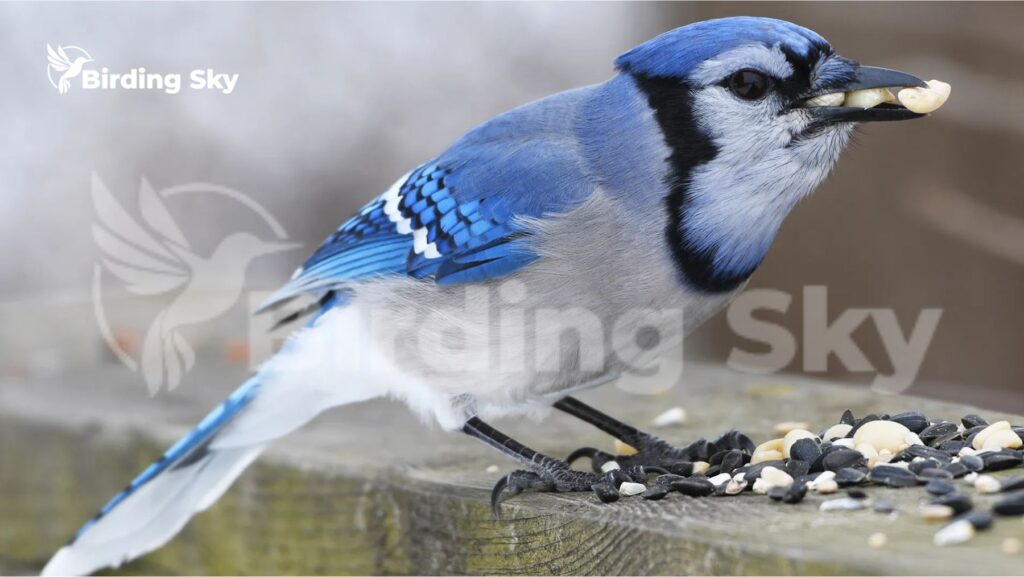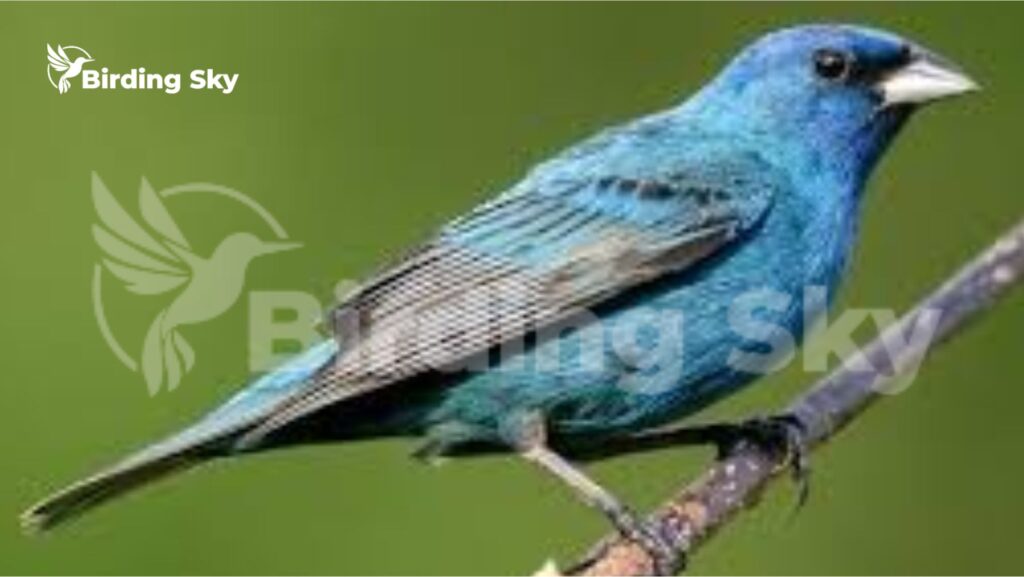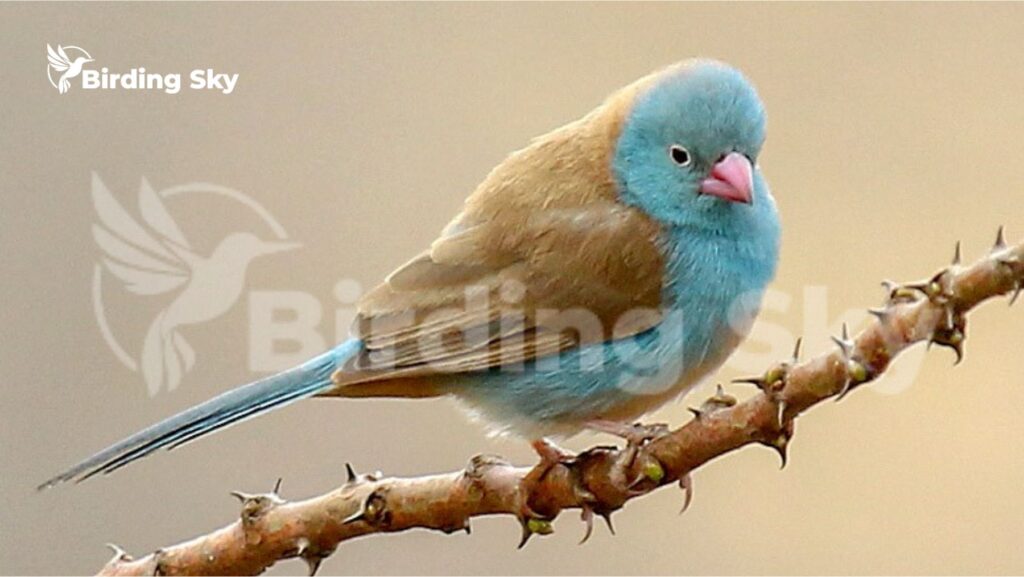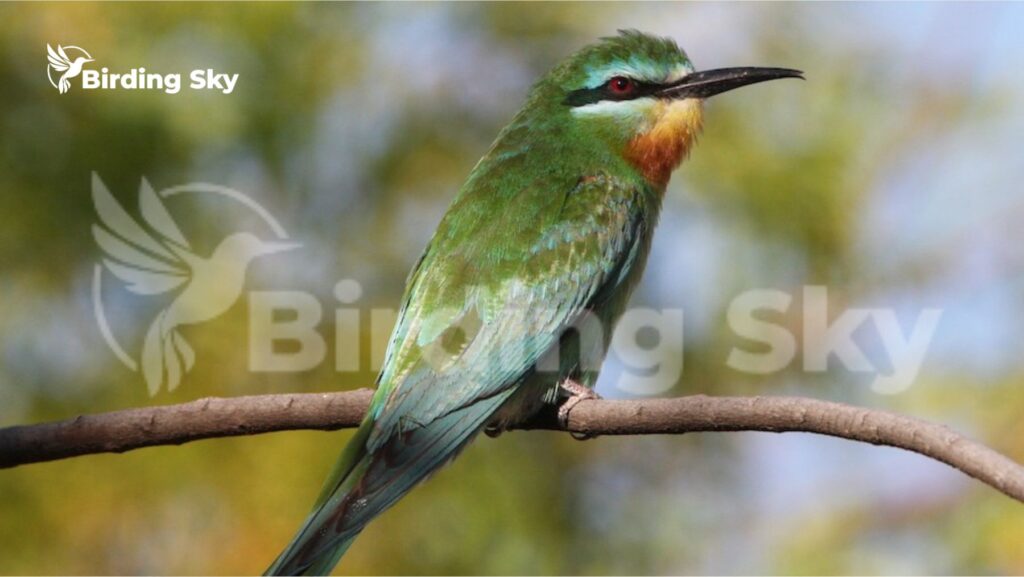Top 6 Blue Birds with Red or Orange Chests are truly mesmerizing. Their vibrant blue feathers contrasting with striking red chests showcase nature’s artistry. Let’s explore these stunning avian wonders together.
Go along with us as we dig into the charming domain of blue birds with red chests, investigating their variety, living spaces, ways of behaving, and the amazement they rouse in bird fans and relaxed spectators the same.
The Dance of Colors: Blue and Red
Seeing how the calmness of blue and the intensity of red complement each other is a sight to see. The combination of these hues is a visual feast that enchants human observers and the bird kingdom. This article honors these fascinating animals for the unique role each plays in the natural world.
1. The Resplendent Blue Jay
A Closer Look at the Blue Jay

The Blue Jay (Cyanocitta cristata) is a North American native that wears its blue feathers and striking red chest like a crown of royalty. Standing as one of the most recognizable birds, the Blue Jay is a frequent visitor to backyards across the continent. Here’s a closer look at this charismatic avian:
- Vibrant Plumage: The Blue Jay’s vivid blue and white plumage and its touch of red on the chest make it a showstopper among birds.
- Distinctive Call: Known for its loud and raucous calls, Blue Jay’s vocalizations add a touch of wildness to any setting.
- Clever Behaviors: Blue Jays are renowned for their intelligence, often mimicking other birds and even humans.
Habitat and Behavior
Blue Jays are highly adaptable birds found in various habitats, from woodlands to urban environments. Their omnivorous diet ranges from insects and nuts to fruits and small vertebrates. Blue Jays are known for their impressive caching behavior, where they hide food for later consumption.
2. The Enigmatic Indigo Bunting
Unveiling the Indigo Bunting

The Indigo Bunting (Passerina cyanea) is a captivating songbird gracing the North American landscape. It’s deep blue plumage and subtle reddish hue on the chest create a remarkable visual contrast. Let’s unravel the mysteries of the Indigo Bunting:
- Iridescent Feathers: The male Indigo Bunting’s feathers appear iridescent, reflecting vibrant blue hues when the light hits them at the right angle.
- Migratory Wonders: These small birds undertake impressive migrations, traveling thousands of miles between their breeding and wintering grounds.
Habitat and Song
Indigo Buntings prefer open habitats, including grasslands, meadows, and brushy areas. Their melodic songs fill the air during the breeding season, creating a symphony that adds charm to rural and suburban landscapes alike.The Captivating Western Bluebird
Exploring the Western Bluebird
The Western Bluebird (Sialia mexicana) is a charming resident of western North America. Its soft blue plumage and rosy-red chest create a delicate yet stunning color combination. Let’s explore the allure of the Western Bluebird:
- Conservation Success: The Western Bluebird has been a beneficiary of conservation efforts, making a heartening recovery in some regions.
- Nesting Habits: These birds often use nest boxes provided by humans, fostering a unique bond between the avian world and bird enthusiasts.
Nurturing the Next Generation
Western Bluebirds are known for their cooperative breeding behavior, where older siblings from previous broods help raise the current year’s nestlings. This intricate system showcases nature’s adaptive strategies for survival.
3. The Majestic Scarlet Tanager
The Scarlet Tanager’s Elegance

The Scarlet Tanager (Piranga olivacea) is a Neotropical migrant that graces North America with its beauty during the summer months. Its velvety black wings, contrasting against electric blue plumage and a brilliant red chest, create an unparalleled spectacle. Let’s marvel at the elegance of the Scarlet Tanager:
- Seasonal Visitors: Scarlet Tanagers embark on an impressive migration, traveling thousands of miles between their breeding grounds in North America and their wintering areas in South America.
- Forest Dwellers: These birds primarily inhabit deciduous forests whose vivid colors stand out against the lush greenery.
Mating Plumage and Behavior
During the breeding season, male Scarlet Tanagers don a striking combination of black, blue, and red to attract potential mates. Their unique coloration and lively behaviors make them a sought-after sighting for birdwatchers.
4. The Alluring Violet-crowned Hummingbird
The Jeweled Hummingbird

The Violet-crowned Hummingbird (Amazilia violiceps) is a dazzling gem of the southwestern United States and Mexico. With its iridescent blue-violet crown and deep red throat, this tiny bird is a true marvel of nature. Let’s uncover the allure of the Violet-crowned Hummingbird:
- High-Energy Lifestyle: Hummingbirds, including the Violet-crowned, have incredibly high metabolic rates, requiring them to feed on nectar multiple times an hour.
- Aerial Acrobats: These birds are renowned for their agility and aerial maneuvers, showcasing their mastery of flight.
Nectar-Feeding Adaptations
Violet-crowned Hummingbirds have specialized adaptations that enable them to feed on nectar. Their long, slender bills and extendable, tube-like tongues allow them to access the sweet reward hidden within flowers.
5. The Enchanting Blue-capped Cordonbleu
A Glimpse of Africa

The Blue-capped Cordonbleu (Uraeginthus cyanocephalus) hails from the grasslands and savannas of sub-Saharan Africa. While predominantly light blue, its subtle reddish-brown chest adds a touch of warmth to its appearance. Let’s take a journey to Africa and explore the enchantment of the Blue-capped Cordonbleu:
- Intricate Nesting: These birds are known for their elaborate nest-building techniques, often incorporating various materials to construct their intricate homes.
- Social Nature: Blue-capped Cordonbleus are social birds, often seen in small flocks engaged in various activities.
Vibrant Courtship Displays
During courtship, male Blue-capped Cordonbleus showcase their vibrant colors through animated dances and displays. These performances are crucial in attracting potential mates and strengthening social bonds.
6. The Lively Blue-cheeked Bee-eater
Bee-eaters’ Delight

The Blue-cheeked Bee-eater (Merops persicus) is a captivating bird found in parts of Asia and the Middle East. Its rich blue plumage, adorned with a touch of red on the chest, mirrors the vividness of the landscapes it inhabits. Let’s discover the world of the Blue-cheeked Bee-eater:
- Aerial Feeding: As the name suggests, bee-eaters primarily feed on flying insects, often catching them mid-flight using their sharp bills.
- Colorful Plumage: Their vibrant colors serve both ornamental and functional purposes, aiding in mate attraction and camouflage.
Cooperative Breeding and Migration
Blue-cheeked Bee-eaters exhibit cooperative breeding behavior, where multiple individuals contribute to raising the young. Their migratory patterns cover vast distances, showcasing their adaptability to different environments.
Final Thoughts:
In the grand tapestry of nature, blue birds with red chests stand as exquisite masterpieces, showcasing the diverse beauty within the avian world. The mesmerizing dance of colors, the unique adaptations, and the behaviors of these birds weave a story of life’s resilience and artistry. Whether found in North America, Africa, or distant lands, these avian wonders continue to captivate and inspire seasoned bird enthusiasts and casual admirers.
FAQs:
1. What is the significance of the blue and red coloration in these birds?
The Blue Birds With Red or Orange Chests and red coloration in these birds serves multiple purposes, including mate attraction, camouflage, and species recognition. The striking contrast of colors often helps males attract potential mates during the breeding season.
2. Are blue birds with red chests rare?
While not all birds with blue and red coloration are rare, some species, such as the Indigo Bunting and the Scarlet Tanager, might be less common due to their specific habitat requirements and migratory behaviors.
3. Can these birds be kept as pets?
It’s important to remember that many of these Blue Birds With Red or Orange Chests are wild species protected by laws and regulations. Keeping them as pets can negatively affect the birds and the ecosystems they inhabit. It’s best to enjoy them in their natural habitats.
